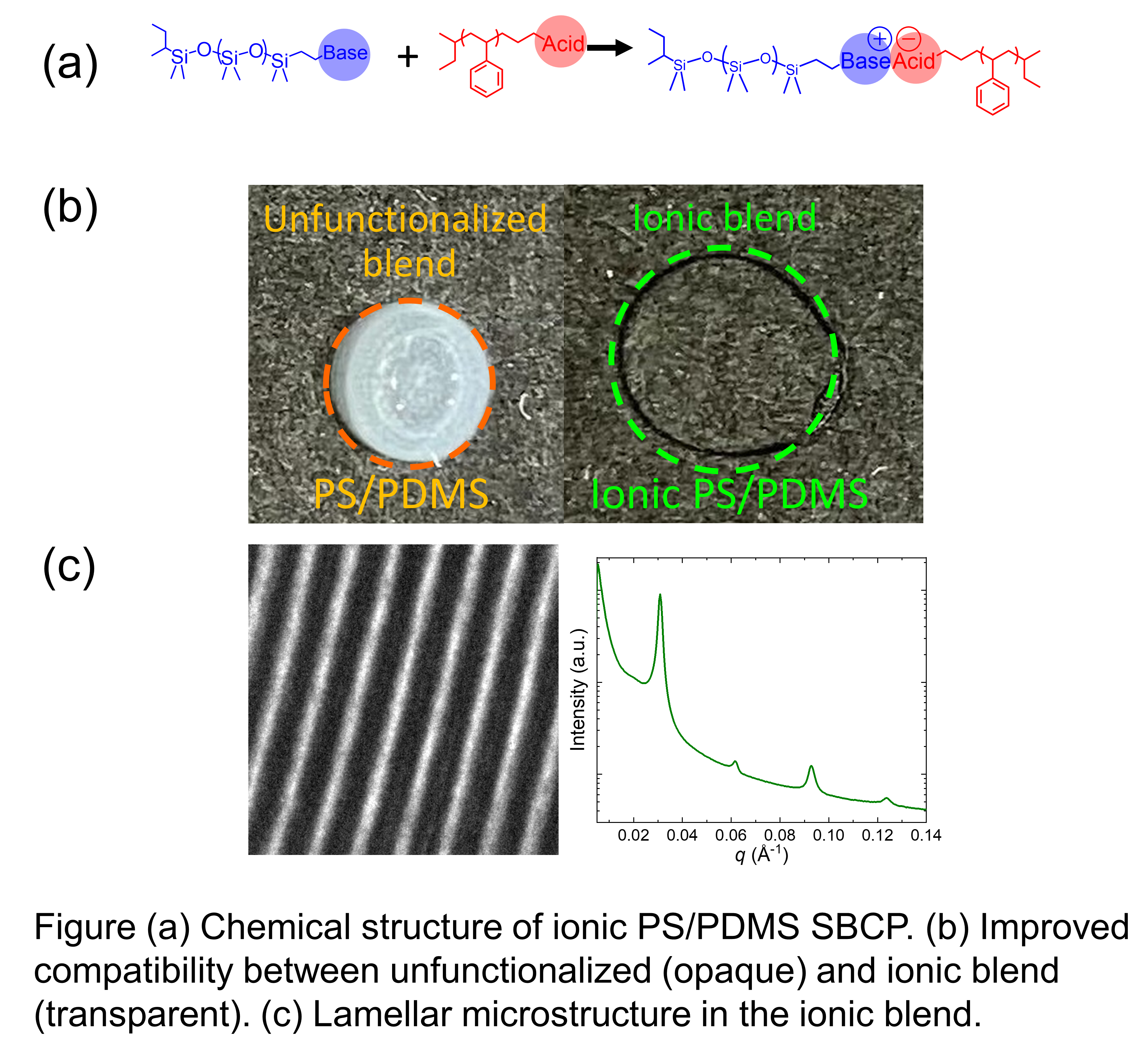(129d) Manufacturing and Remanufacturing of Ion-Mediated Polymer Assemblies, Blends and Nanostructures
AIChE Annual Meeting
2022
2022 Annual Meeting
Materials Engineering and Sciences Division
Charged and Ion Containing Polymers II
Monday, November 14, 2022 - 1:30pm to 1:45pm
Chemically dissimilar polymers are rarely miscible due to an entropy of mixing that scales as 1/N, where N is the degree of polymerization, thus, compatibilization of immiscible polymer blends is a challenge in both academic research and relevant industry. When the chain ends of distinct polymers are functionalized with reacting cation/anion groups, supramolecular block copolymer (SBCP) with ionic junctions can form in situ via “reactive blendingâ€, leading to stabilized microdomains and suppressing macroscopic phase separation. Due to the dynamic nature of ionic bonds, SBCP self-assembly can be tuned by the ionic bond energy (h), segregation strength (χN), and chain architecture. In this work, we synthesized a library of ionic polystyrene/polydimethylsiloxane (PS/PDMS) SBCP blends that are macroscopically homogeneous but with various end group chemistries (various h), molecular weights, and architectures (diblock and triblock). Moreover, using X-ray scattering and transmission electron microscopy techniques, we have observed well-ordered lamellae produced by stronger cation-anion interactions and more swollen microphases in weakly-interacting, larger molar mass, or triblock-type SBCPs, where unbonded homopolymers swell the corresponding domain. The phase behavior of ionic SBCP has been systematically studied experimentally and by SCFT simulations, revealing that ionic interactions are a powerful tool to compatibilize immiscible blends and might be exploited in plastic waste upcycling.


